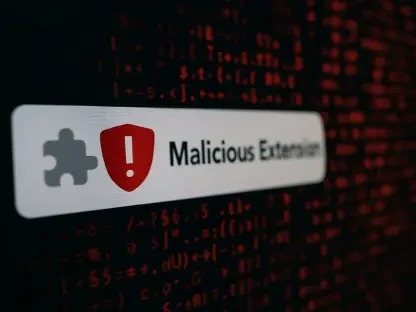The education sector is facing a significant surge in cyber breaches as the new academic year gets underway, with over 650,000 records exposed in the past 60 days alone. According to research from Abnormal Security, this alarming rise in cybercrime incidents has affected multiple educational institutions, exposing sensitive information of students, staff, and educators. These breaches have not only compromised personal data but also highlighted the vulnerabilities within the sector’s cybersecurity infrastructure. As students and teachers transition back to school, the urgency for enhanced security measures has never been more critical.
Major Cyber Incidents in the Education Sector
In a detailed analysis of recent cyber incidents, Abnormal Security identified several key breaches that occurred between June and July 2022, illustrating the widespread nature of these attacks. On June 13, information of 46,169 university students in the United States was exposed in a data breach, marking the start of a series of damaging incidents. Remarkably, on the same day, another data breach revealed the records of 576,735 elementary school teachers, amplifying concerns over the security of educational institutions. The breaches didn’t stop there. On July 10, 27,000 records containing both student and staff information were posted online, further underscoring the persistent threat.
One particularly alarming incident occurred on July 19, when a data breach compromised a $200 million IT system, affecting 25,000 individuals. These examples highlight the diverse range of targets within the education sector, from elementary schools to universities, and the varying scales of data exposed. Each breach underscores the potential for significant disruption and harm, not just to the individuals involved but to the educational institutions themselves. As cybercriminals continue to evolve their tactics, the education sector remains a lucrative target due to the wealth of information stored within its systems.
Phishing: The Primary Threat Vector
One common theme emerging from these breaches is the prevalence of phishing as the primary threat vector. Phishing attacks exploit the trust and familiarity of email communication, making them particularly effective at deceiving individuals into revealing sensitive information. The investigated breaches reveal a glaring vulnerability in email systems across educational institutions. Phishing attacks can lead to further security lapses, including the installation of malware or ransomware, causing extensive damage that can be difficult and costly to repair.
As the new academic year begins, educational institutions must place a heightened focus on email security. This involves not only deploying advanced email filtering technologies but also educating staff and students on how to recognize and respond to phishing attempts. Awareness and training can significantly reduce the likelihood of successful phishing attacks, creating a more resilient security posture. By understanding the nuances of phishing schemes and implementing robust preventative measures, educational institutions can better safeguard their data and mitigate the associated risks.
Increased Digital Activity and Lax Security Practices
The transition period into the new academic year often sees a spike in digital activity, with students and staff accessing various online platforms and services. This increased digital footprint can sometimes be accompanied by lax security practices, as institutions prioritize operational efficiency over stringent cybersecurity measures. Cybercriminals are acutely aware of this transitional vulnerability and often time their attacks to exploit these busy periods. This pattern of targeting educational institutions during high-activity phases suggests a need for continuous vigilance and proactive cybersecurity strategies.
Educational institutions hold a treasure trove of sensitive data, from personal student information to financial records, making them attractive targets for cybercriminals. As the new academic year unfolds, schools, colleges, and universities must reinforce their cybersecurity frameworks to protect against potential breaches. This involves regular security audits, updating software and systems, and ensuring compliance with established security protocols. By adopting a proactive stance, educational institutions can better prepare to defend against the evolving threat landscape and minimize the impact of any potential cyberattacks.
Importance of Robust Cybersecurity Measures
The education sector is grappling with a significant rise in cyber breaches as the new academic year commences. In just the past 60 days, more than 650,000 records have been compromised. Research from Abnormal Security sheds light on this alarming trend, indicating that numerous educational institutions have been affected. The breaches have exposed sensitive information belonging to students, staff, and educators. Beyond just the immediate threat to personal data, these incidents underscore glaring weaknesses in the cybersecurity defenses of educational institutions. As students and teachers return to classrooms, the need for stronger security measures has become increasingly urgent. Schools must recognize the critical importance of enhancing their cybersecurity infrastructure to protect personal data and maintain trust. Addressing these vulnerabilities should be a top priority to safeguard the educational environment. Without significant improvements, the sector will remain a prime target for cybercriminals, endangering the privacy and safety of all involved.








